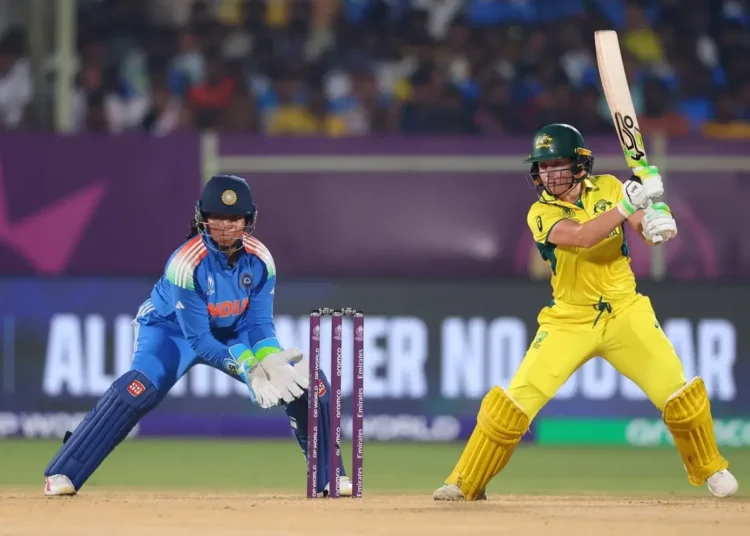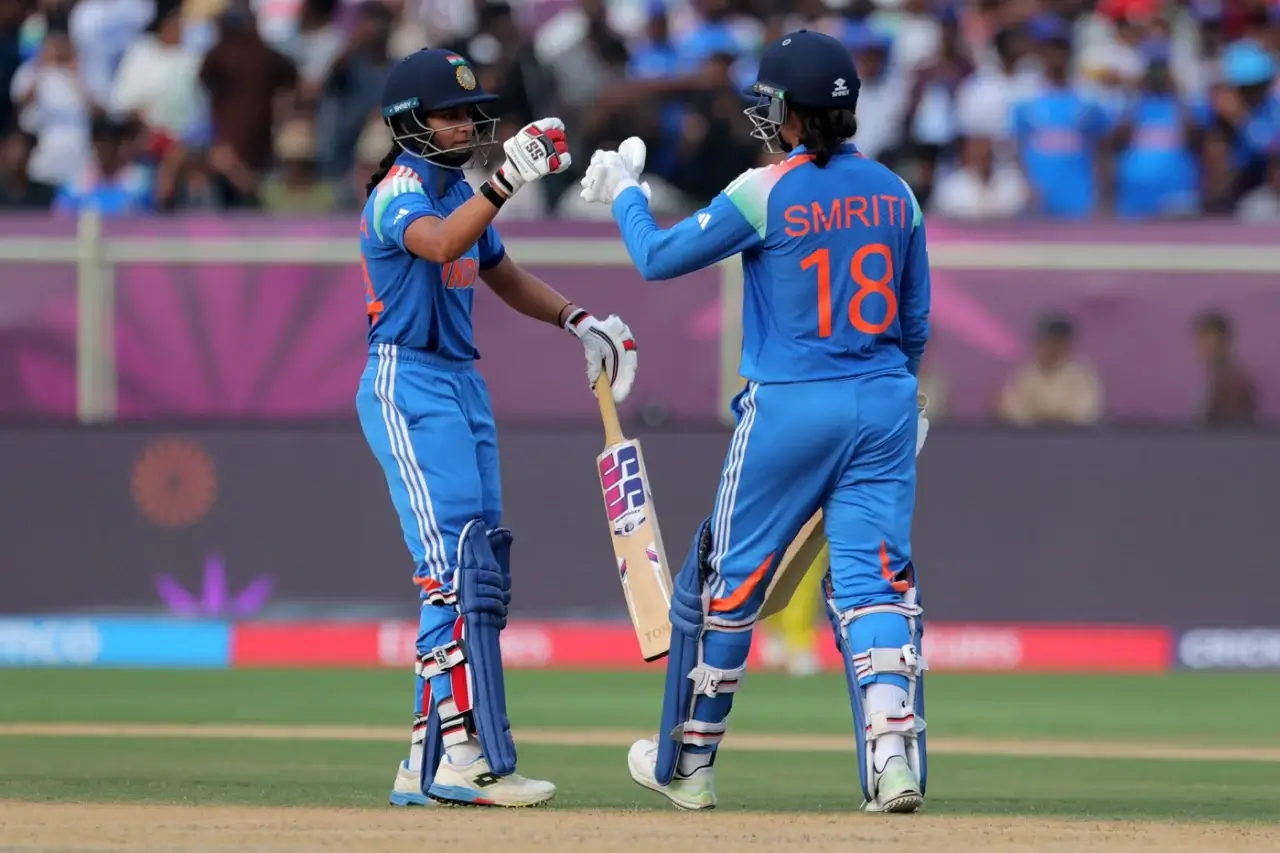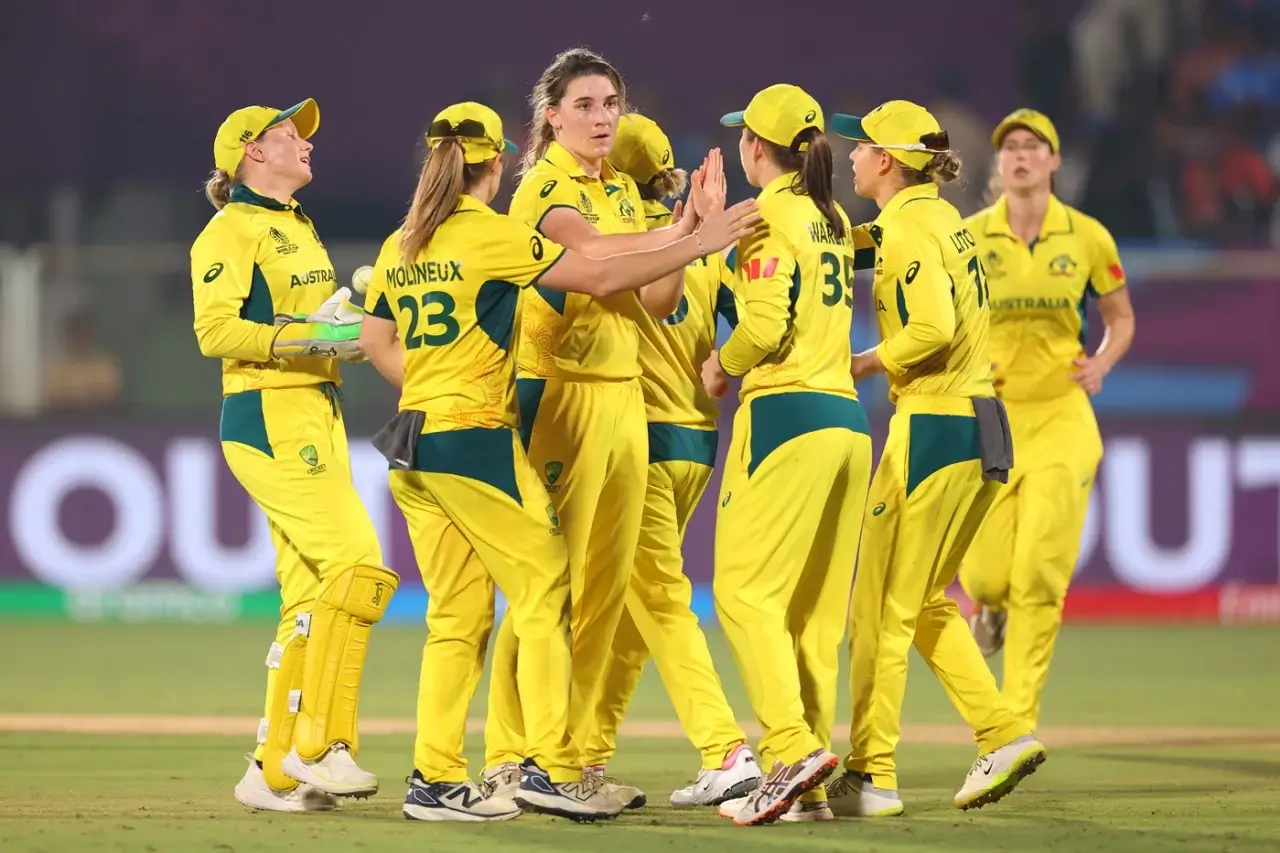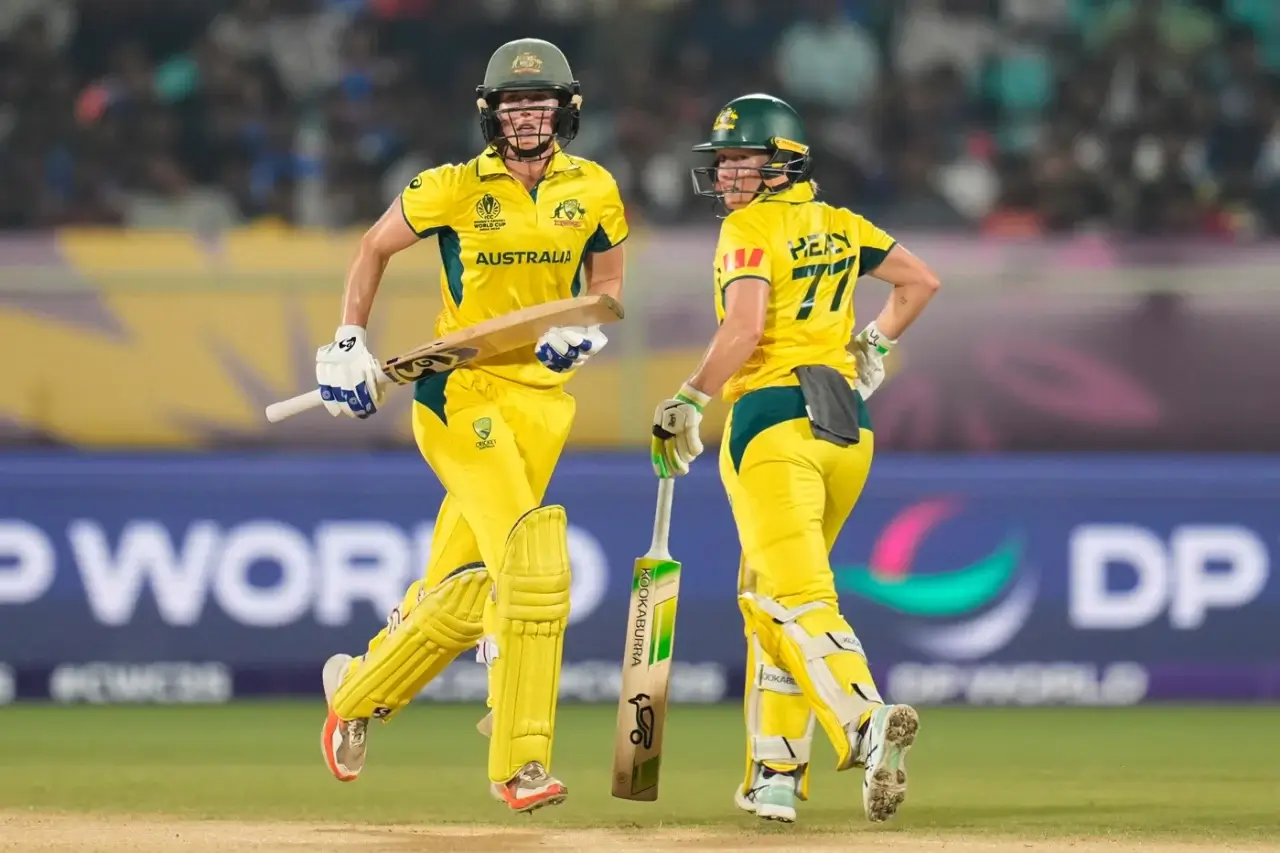In Visakhapatnam, the crowd witnessed India’s women’s team deliver their most commanding batting show of the tournament. Smriti Mandhana and Pratika Rawal led the charge, building a strong base that promised a towering total. Their 155-run opening stand was the best ever for any team against Australia in a Women’s World Cup. Mandhana’s 80 and Rawal’s 75 guided India to 330, their highest total in World Cup history.
Yet the dominance wasn’t without stumbles. India collapsed from 192 for 1 to 330 all out in 48.5 overs. Annabel Sutherland’s clever variations earned her a five-wicket haul, turning what looked like a 370-plus total into 330. Still, it was enough to set Australia the challenge of the highest successful chase in women’s ODI history.
The innings reflected India’s new approach — aggressive intent mixed with fearless shot-making. Mandhana crossed 5000 ODI runs and 1000 runs in a calendar year. For Rawal, this was another confident display of timing and temperament. The foundation was laid, but the finish left room for reflection before the big chase began, like indian team does against teams in timeline.
Mandhana’s Milestones Power India’s Commanding Start
Smriti Mandhana played a fluent, attacking knock that set the tone early. Her ability to find boundaries even during quiet overs lifted the tempo whenever India seemed stuck. She brought up her half-century in just 46 balls, blending wristy flicks and audacious ramps.
Against the spinners, she was brilliant. Mandhana’s six off Molineux over long-on marked her as the first woman to score over 1000 ODI runs in a calendar year. Moments later, she crossed 5000 ODI runs faster than any woman in history. Her pull shots and lofted drives had the crowd on their feet.
When Mandhana fell for 80, holing out to deep midwicket, India were in control at 155 for none. But her wicket triggered a brief slowdown, and the middle order had to shoulder responsibility. Her partnership with Rawal ensured India stayed ahead despite losing quick wickets later. This knock underlined why Smriti Mandhana remains India’s most reliable run-machine in global tournaments.
Rawal’s Steady Hand Balances Mandhana’s Aggression
Pratika Rawal started slowly, consuming dot balls early, but showed great maturity later. She played sensibly, using her feet and waiting for loose deliveries. Once settled, she struck cleanly through midwicket and over long-on.
Her fifty came from 69 balls, with a mix of placement and patience. When Alana King dropped her on 41, she capitalized by accelerating through the middle overs. Her dismissal on 75, caught off Sutherland, stopped what could have been her first ODI hundred.
Rawal’s knock proved vital in anchoring India’s innings. While Mandhana attacked, Rawal stabilized. Together, they produced India’s highest opening stand in World Cup history. Her control against spin also answered critics who questioned her scoring rate in earlier matches.
Sutherland’s Five-for Shifts the Momentum Back to Australia
Annabel Sutherland’s spell brought Australia back from the brink. When India looked set for 370, she mixed pace and seam movement perfectly. Her figures of 5 for 40 were not just economical but game-changing.
She dismissed Rawal and Ghosh with clever, slower balls, breaking India’s rhythm. Her control in the death overs restricted India to 330 from a projected 370-plus. Each of her five wickets came from smart variation rather than raw pace.
Molineux supported well with 3 for 75, maintaining pressure at the other end. Sutherland’s performance ensured Australia still had hope despite the daunting target. Her consistency this World Cup has made her Australia’s most dependable allrounder in crunch moments.
India’s Middle Order Falters at the Finish
Despite a solid start, India’s middle order couldn’t finish strong. Harmanpreet Kaur showed intent, hitting two boundaries before slicing to point. Harleen Deol and Jemimah Rodrigues tried to rebuild but lost momentum at crucial stages.
Richa Ghosh injected late aggression, striking three fours and two sixes. She and Rodrigues added 50 runs off just 31 balls, pushing India past 300. But when Sutherland returned, her off-pace deliveries dismantled India’s tail quickly.
From 310 for 6, India were all out for 330. It was a collapse that reflected the team’s old pattern — strong starts followed by weak finishes. India’s fans would hope that the bowlers could defend this solid, though not massive, total under lights in Vizag.
Australia Face Record Chase Amid India’s Bowling Questions
Australia now faces a record target, but India’s bowling depth remains a concern. With Kranti Gaud and Amanjot Kaur inexperienced at this level, pressure will rest on the spinners. Sneh Rana’s comments before the match hinted that India might be short of a pure sixth bowler.
Renuka Singh or Arundhati Reddy could have been useful inclusions, offering pace balance. But team management trusted the same combination again. Australia, led by Alyssa Healy, will look to counter this by attacking in the powerplay.
Healy herself mentioned teams struggling with early collapses, but she backed her side’s depth. If the openers — Healy and Phoebe Litchfield — start well, India could be under pressure. The pitch in Vizag has runs but also offers grip, making early breakthroughs key for India’s bowlers.
Healy and Australia’s Plan to Tackle Indian Conditions
Healy’s calm confidence before the game reflected Australia’s mindset. She dismissed their earlier collapses as minor lapses, not major flaws. Instead, she emphasized adapting quickly to conditions.
Australia’s top order remains aggressive by design. Litchfield’s reverse-hits and Gardner’s counterattack style show their adaptability. They plan to dominate India’s spinners before the dew settles in.
Healy also acknowledged India’s rise as a “sleeping giant” awakened by WPL exposure. Her team knows that a good start in the power play can neutralize India’s bowling plans. The rivalry, built over years of close contests, continues to define women’s cricket’s biggest stage.
Conclusion: India’s Strong Base, But Finishing Still Needs Fixing
India’s innings was a showcase of promise mixed with missed potential. Mandhana and Rawal gave India a dream start, laying the foundation for a huge total. Yet the middle-order collapse and lack of acceleration in the final overs remain concerns.
Annabel Sutherland’s five-for reminded everyone of Australia’s bowling discipline. The match is set up beautifully — India’s bowlers must defend 330 under pressure. Fans in Vizag can expect another thriller as both teams battle for control at the halfway stage of the Women’s World Cup.
This match has all the makings of a turning point. If India manages to defend this total, it could redefine their campaign. If not, questions about balance and depth will surface again. Either way, the Mandhana–Rawal partnership has shown that India Women are no longer afraid to play bold, attacking cricket when it matters most.







